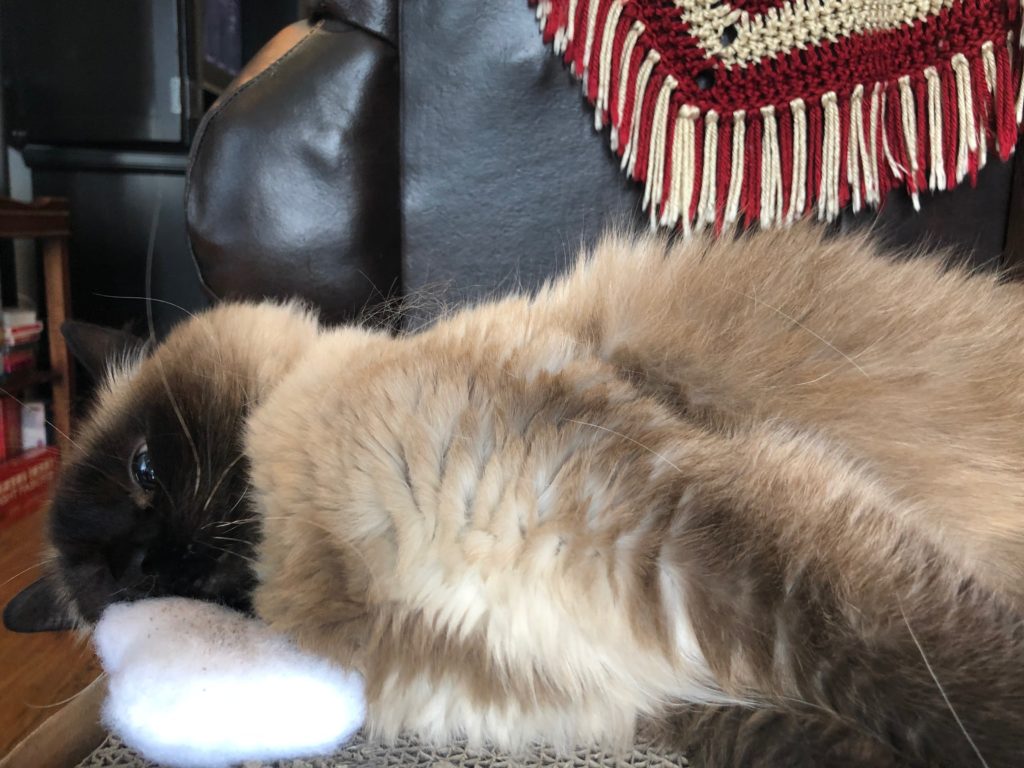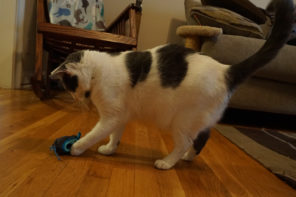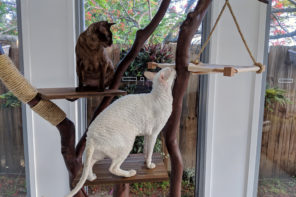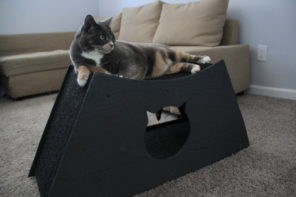Ah, those cute little kitty noses. While they’re highly boopable, feline snoots are also quite sensitive. In fact, a cat’s nose has 200 million scent receptors, whereas human noses only have 56. Because of the power of the kitty schnoz, cats are able to greatly benefit from fun scent-based activities that can spice up their lives through enrichment.
Enrichment can be any activity that engages a cat in a positive way, and it’s important for a high quality of life in indoor cats. Because the life of a pet is much different than the life of a wild animal, responsible pet owners have to make up for the difference with enrichment activities so that our furry friends don’t become bored or depressed, which can lead to a host of health issues.
This is what Adventure Cats is all about, but when you can’t get outside to explore all that nature has to offer, there are plenty of fun things you and your kitty can do indoors, and scent-based activities are fun “fur” everybody.
So, let’s all wake up and smell the enrichment!
Where to begin?
Dr. Lynn Bahr, an Atlanta-based veterinarian and the owner of the very cool kitty company Dezi & Roo, says, “The best place to start with scent enrichment is to open the windows. Believe it or not, fresh air is something a lot of indoor cats never experience. They need to smell the air and scents from their surroundings.”
Who knew something so simple could be so effective, and that scent enrichment can begin with just a breath of fresh air? Of course, make sure your indoor kitty cannot escape! For this reason, we love catios as a safe way for indoor kitties to get a taste (and smell!) of the great outdoors.

(Photo: Tinsley Hunsdorfer/Audubon Society of Portland)
What’s with all the buzz about catnip?
Catnip is, of course, one of the most well-known tools in scent enrichment, but it’s not the only option for your furry friend. Dr. Bahr shares her thoughts on the ol’ ‘nip with us and offers up a potentially even better alternative.
“I do think that some strains of catnip are better than others,” she says. “Freshly harvested and dried catnip is better than old, stale nip. Some cats like fresh catnip plants that owners can grow themselves, while others ignore it and prefer the store-bought dried leaves. I recommend silver vine more often than I do catnip, but I encourage owners to give their cats lots of different scents to smell.”
MORE: How to forage for wild catnip
Variety is the spice of life, it seems, especially when talking about feline olfactory exercises!

It’s estimated that 70 percent to 80 percent of cats react to catnip. (Photo: HHelene/Shutterstock)
Is silver vine better than catnip?
For those unfamiliar with silver vine, it’s a climbing plant that grows in the mountains of Asia, and felines have a more intense reaction to it than they do catnip.
“[It’s] a powerful cat attractant similar to catnip but is barely known in the USA and very hard to find,” Dr. Bahr writes in her blog. “It’s made from a plant that is native to the mountainous regions of eastern Asia and is widely used in Japan and China as a cat stimulant. When exposed to it, cats enter a euphoric state that mimics catnip. However, silver vine powder is more potent than catnip due to the presence of two cat attractants, as opposed to catnip’s one.”

Sherman snuggles with a Cloud Nine-dusted Little Puff from Dezi & Roo (Photo: Kristen Bobst)
Dr. Bahr even says there’s a ranking of “purrcisely” which scents the average kitty prefers. “The order of preference for cats is silver vine, catnip, honeysuckle, valerian,” she says.
For the uninitiated, honeysuckle and valerian are also plants that often appear in the form of edible herb like catnip and silver vine.
What about non-herbal options for scent enrichment?
In addition to silver vine and catnip, Dr. Bahr also has some great advice for low-cost, easy and natural ways to help your kitty through scent enrichment.
“I encourage owners to bring scents in from the outside like branches, sticks and leaves. Let [cats] sniff paper food bags from fast food restaurants. Anything that is not toxic from the outside is a good way for owners to allow their cats to smell normal items they would find outside if they were not locked within four walls.”
So be creative with your scent enrichment and let those little cat noses go wild!
Scents to avoid
Here at Adventure Cats, we believe in safety “purrst,” so Dr. Bahr also filled us in on what not to do when it comes to smells.
“I can tell you what owners should not do: burn essential oils, use toxic cleaning supplies, scented litter, etc. Cats indoors are breathing and smelling what is within those four walls and much of what they are being exposed to is not good for them,” she says.
Eleasha Gall, an animal behavior specialist and trainer at Wallis Annenberg PetSpace in Los Angeles agrees, saying that harsh cleaning products can negatively affect our feline friends, creating both health and behavioral problems. “In homes, a lot of issues develop after the owners spray something such as Febreze or other air scents,” she says.
MORE: Building the catio of your dreams is easier than you think
External smells can also influence indoor cats. For example, “when a new cat moves into the neighborhood, if the windows are open, the resident cats often have a reaction (to the new cat’s scent),” Gall says.
However, scent can also be comforting for kitties, which is why PetSpace ensure that its adoptable felines aren’t suddenly surprised with entirely new scents in familiar places. “We even keep some of their bedding the same every day so that we are not losing their scent in room on a daily basis,” Gall explains.
Clearly, scent plays a significant role in cats’ lives, so it’s “impurrative” to be aware of what smells your own cat is breathing in on a daily basis. Just remember to consider your cat before using cleaning products, be sure to open the windows if you can do so safely, and bring on the silver vine and other fun olfactory experiences. You’re just a sniff away from “pawsitive” scent enrichment!





